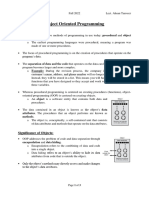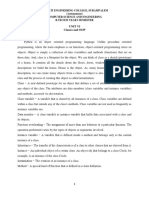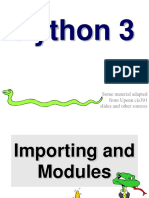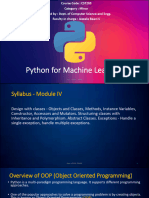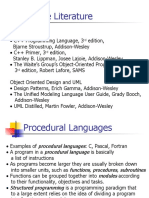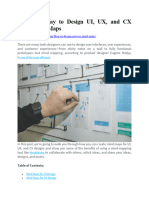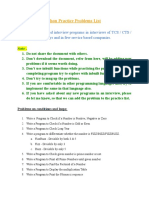0% found this document useful (0 votes)
28 views43 pagesWeek 9 Lecture Slides
This document provides an overview of object oriented programming concepts including classes, objects, encapsulation, and inheritance. It discusses the differences between procedural and object oriented programming, defining classes and objects, and creating class instances in Python using the __init__() method. Key concepts covered are that classes provide a logical grouping of data and methods, objects are instances of classes, and the __init__() method initializes an object's attributes when it is created.
Uploaded by
Achyut ParajuliCopyright
© © All Rights Reserved
We take content rights seriously. If you suspect this is your content, claim it here.
Available Formats
Download as PDF, TXT or read online on Scribd
0% found this document useful (0 votes)
28 views43 pagesWeek 9 Lecture Slides
This document provides an overview of object oriented programming concepts including classes, objects, encapsulation, and inheritance. It discusses the differences between procedural and object oriented programming, defining classes and objects, and creating class instances in Python using the __init__() method. Key concepts covered are that classes provide a logical grouping of data and methods, objects are instances of classes, and the __init__() method initializes an object's attributes when it is created.
Uploaded by
Achyut ParajuliCopyright
© © All Rights Reserved
We take content rights seriously. If you suspect this is your content, claim it here.
Available Formats
Download as PDF, TXT or read online on Scribd
/ 43


